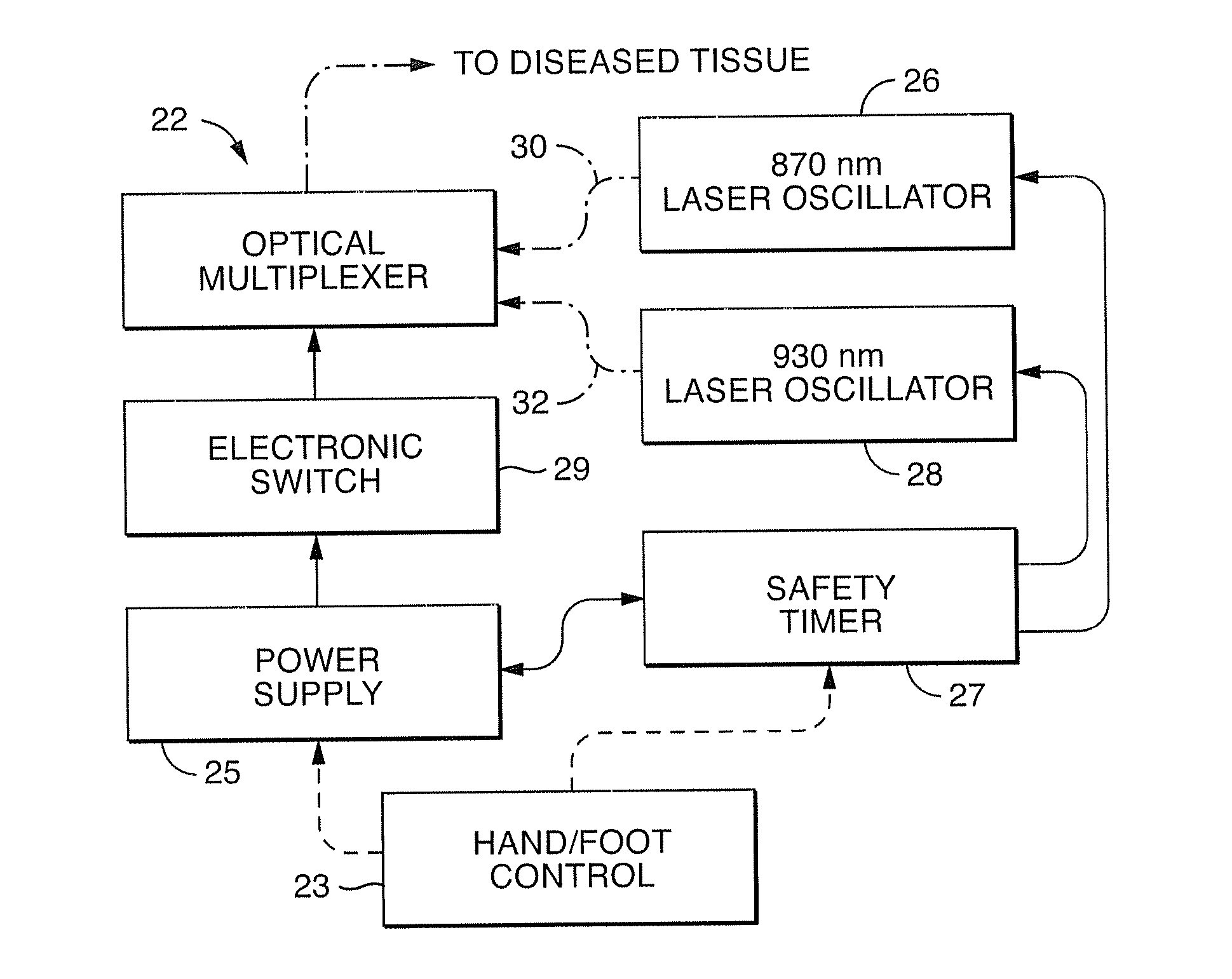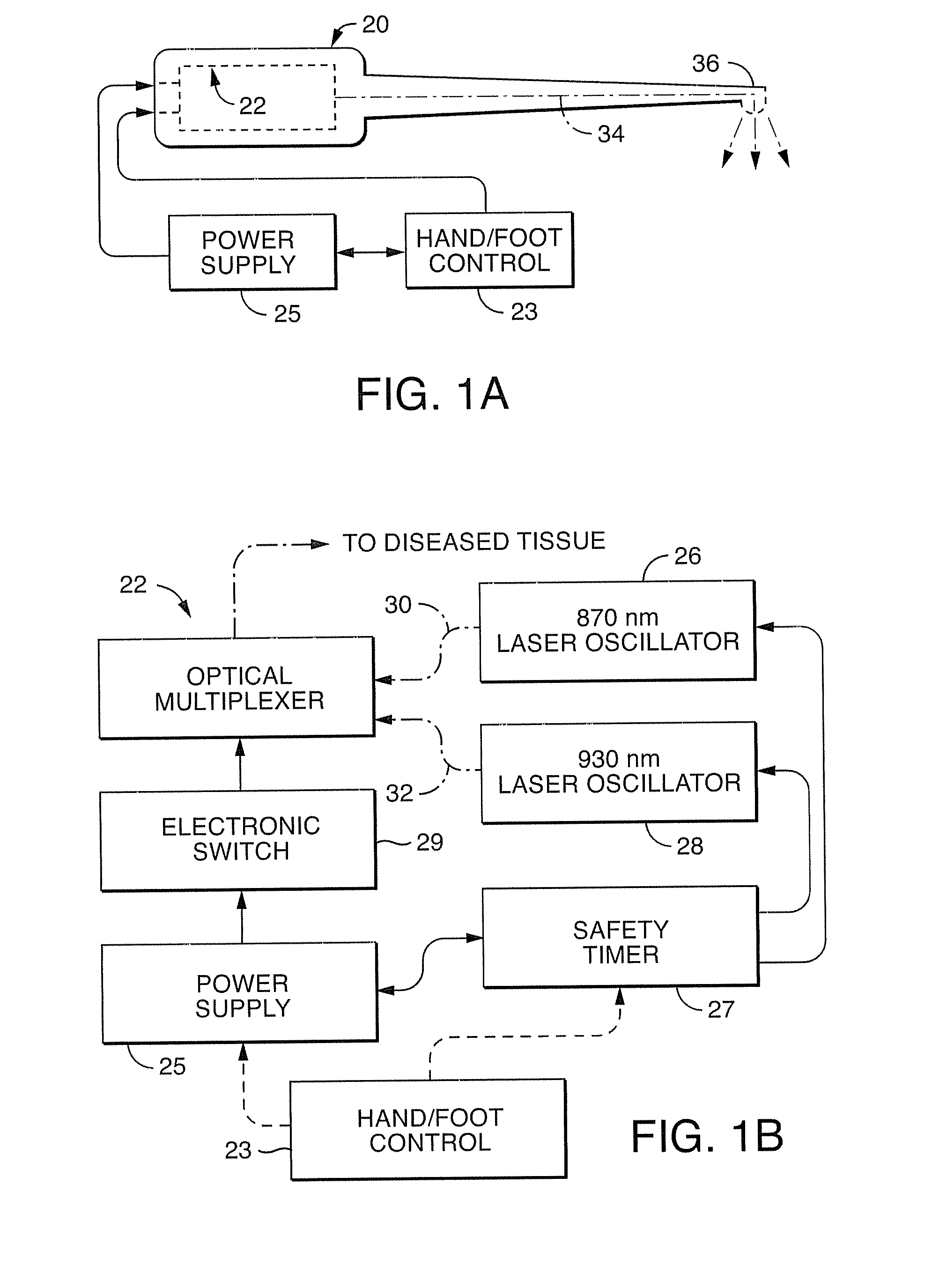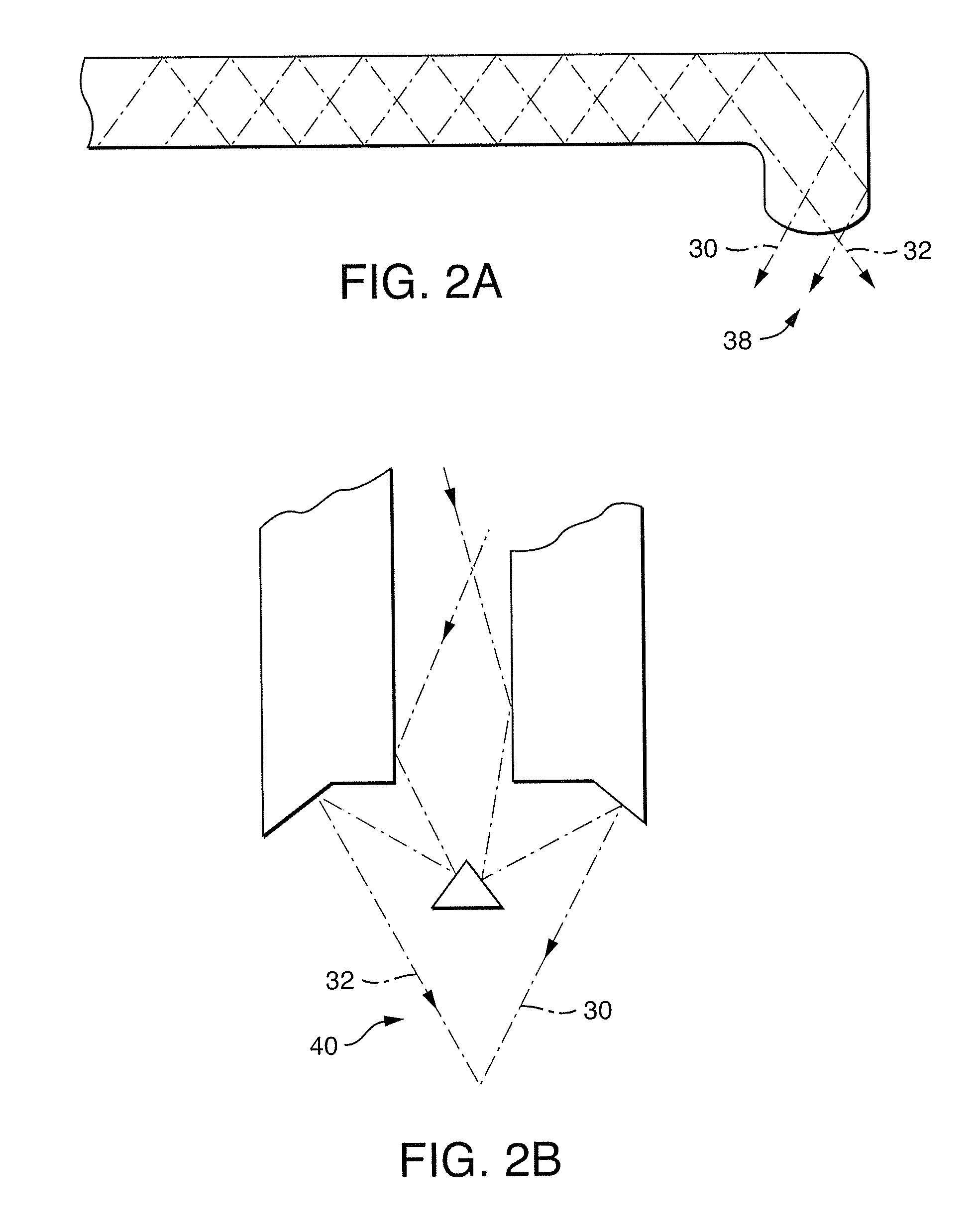Near infrared microbial elimination laser system
a laser system and infrared technology, applied in the field of near infrared microbial elimination laser system, can solve the problem of irreversible harm to the biological system, and achieve the effect of reducing heat deposition
- Summary
- Abstract
- Description
- Claims
- Application Information
AI Technical Summary
Benefits of technology
Problems solved by technology
Method used
Image
Examples
example i
[0060] The prior art literature (Neuman, Biophysical Journal, Vol. 77, November 1999, infra) reports that 870 nm and 930 nm radiation from a tunable Ti:Sapphire laser during confocal microscopy has produced a 7-fold mortality in E. coli. A careful study of this information by the inventor hereof has lead to the following conclusions. At face value, it is power density (brilliance) that, aside from the 870 nm and 930 nm wavelengths, is the most important parameter to cause the above described toxic singlet oxygen reaction. This can be calculated using the formula: Power density (W / cm.sup.2)=total power (W) divided by spot size (cm.sup.2). Using this relationship, it is calculated that, with at least 100 mW and an adjustment of spot size, necessary bactericidal density can be reached. It is believed that the toxic singlet oxygen reaction takes place in accordance with a power density curve. It is adjustable by increasing power (always below tissue coagulation potential), by increasing...
example ii
[0061] The unique bactericidal capabilities of 870 nm and 930 nm radiation may be demonstrated by the following equation, which considers the wave nature of light, the energy per photon based on wavelength, and what that energy does to cells: E=hf, where E=energy, h=Plank's constant, and f=speed of light / wavelength. E=hf really describes a photon's momentum. In other words, a photon's momentum is directly related to energy. This means, the shorter the wavelength, the greater the momentum (energy) of the photon. Consider the following.
[0062] Ultraviolet Wavelengths
[0063] 1) ArF laser at 193 nm generates UV-C at 6.4 electron volts / photon (EV / photon)
[0064] 2) XeCl laser at 308 nm generates UV-A at 4.0 EV / photon
[0065] Visible Wavelengths
[0066] 1) Ar laser at 514 nm generates 2.4 EV / photon
[0067] 2) He—Ne Laser at 633 nm generates 2.0 EV / photon
[0068] Infrared Wavelengths:
[0069] 1) Diode laser at 800 nm generates 1.6 EV / photon
[0070] 2) Er:Yag Laser at 2940 nm generates 0.4 EV / phot...
example iii
[0073] It is well known that: (1) ultraviolet light and ultraviolet lasers are more highly energized than visible or infrared, and that they “in and of themselves” are mutagenic in nature; (2) ultraviolet (non-ionizing) radiation of greater than six EV / photon (e.g., UV ArF) can excite electrons in a biomolecule (e.g., DNA) into an ionization state; (3) less than six EV / photon (UV-A, UV-B, visible, and infrared) can only excite biomolecule electrons into higher electronic or vibrational states, but not ionization states, because the photons carry substantially less energy; (4) UV-B and UV-A can cause substantial cross-link damage without ionization, again because of the extra electron volts that they carry at this non-ionizing UV wavelength.
[0074] It is exactly these higher energy ionization states caused by certain higher energy UV photons (UV-C) upon absorption by biomolecules, that can cause pyrimidine dimers in the DNA.
[0075] The 870 nm and 930 nm energy, independently of energ...
PUM
 Login to View More
Login to View More Abstract
Description
Claims
Application Information
 Login to View More
Login to View More - R&D
- Intellectual Property
- Life Sciences
- Materials
- Tech Scout
- Unparalleled Data Quality
- Higher Quality Content
- 60% Fewer Hallucinations
Browse by: Latest US Patents, China's latest patents, Technical Efficacy Thesaurus, Application Domain, Technology Topic, Popular Technical Reports.
© 2025 PatSnap. All rights reserved.Legal|Privacy policy|Modern Slavery Act Transparency Statement|Sitemap|About US| Contact US: help@patsnap.com



